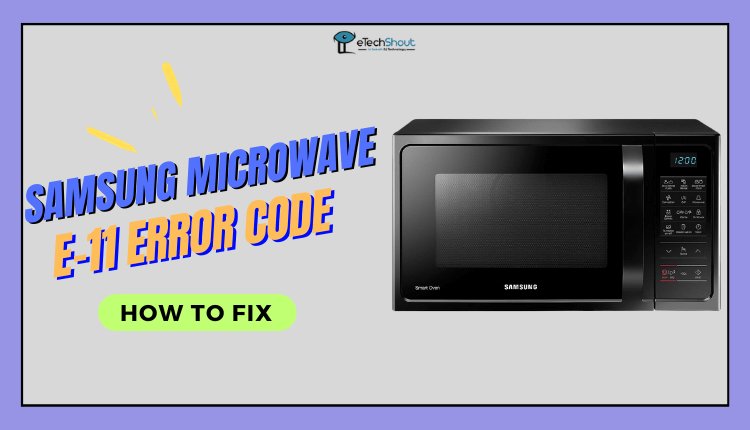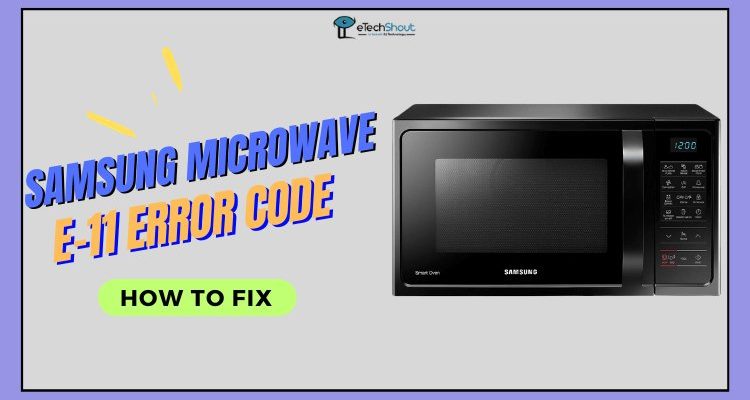
Imagine you’re trying to heat up last night’s leftovers, and instead of the familiar hum of your microwave, you see an OE error code blinking at you. Frustrating, right? This error code is Samsung’s way of saying that there’s a problem with the oven’s sensor. It’s like when a car’s check engine light pops on—it’s a signal that something needs attention. Understanding what this means and knowing when to call in a professional can help save time, money, and maybe even your microwave.
Understanding the OE Error Code
When you see the OE error on your Samsung microwave, it primarily means there’s an issue with the sensor that helps regulate the microwave’s operation. Think of it like trying to drive with a blindfold on; it’s just not going to work well. The sensor plays an essential role in ensuring your microwave heats your food correctly. If it’s not working, your meals might turn out as cold as they went in, or even worse, you might not be able to use your microwave at all.
Why does this matter? Well, a faulty sensor might lead to uneven heating or even complete failure to start up. This error could result from sensor malfunctions, wiring issues, or even software glitches. You see, modern microwaves are more like small computers, so any hiccup in the “brain” can cause all sorts of unexpected issues. If you’re unsure, it’s usually best to err on the side of caution and think about consulting a technician.
So, you might be wondering what you should do next. Should you try to fix it yourself, or is it time to reach out for professional help? The answer depends on your comfort level with handling electronics and whether you’re familiar with the internal workings of a microwave. If not, a call to a technician could be the safer bet.
When To Attempt a DIY Fix
Before you speed-dial the nearest technician, there are a few things you can try first. It’s a bit like when your computer’s acting up, and your first move is often to restart it. Sometimes, all your microwave needs is a little reset. Unplug the appliance for a minute or two, then power it back up. This can sometimes clear the error code if it was caused by a minor glitch.
Next, check if the interior of the microwave is clean. It might sound like a no-brainer, but sometimes food residue or moisture can affect the sensor’s functioning. It’s not unlike how a camera lens might struggle to focus if it’s smudged. Ensure the microwave is clean and dry inside and test it out again.
However, if the error persists, it might be time to examine more complex parts, like checking the door latch. Like a safety belt in a car, if the door isn’t properly closed, the microwave won’t start, and sometimes the OE error might appear. If everything seems in order, yet the issue continues, you may need to consider the next steps, like seeking professional help.
The Right Time to Call a Technician
You’ve tried the basic fixes, and that pesky OE error is still glaring back at you. Now what? It’s probably time to call a technician. Just like you wouldn’t try to fix a broken water heater without some plumbing know-how, handling the internal workings of a microwave can be risky without proper training.
A technician can diagnose and address wiring faults or sensor issues that require specialized tools and expertise. They’re like the detectives of the appliance world, using their skills to pinpoint and solve the exact problem. Attempting to tinker with internal components yourself might lead to further damage or even safety risks, like electrical shocks.
It’s also important to consider the warranty. Many Samsung microwaves come with a warranty period; any DIY efforts could void this protection. Consult the warranty details first and see if the repair can be covered. If all signs point towards professional help, don’t hesitate to reach out to a certified Samsung repair service.
Preventing Future Error Codes
Now that the OE error is resolved, you may be thinking about how to prevent it from happening again. Much like regular maintenance on a car can prevent breakdowns, regular care for your microwave can keep it running smoothly. Always keep the microwave clean and dry, especially after cooking meals that tend to splatter.
Consider giving your microwave a break between uses if you’re cooking large batches. Overheating can sometimes cause temporary malfunctions. Regularly consulting your manual can also be beneficial. Understanding your appliance’s capabilities and limitations is key to keeping it in top-notch condition.
Ultimately, while encountering an OE error can be inconvenient, it’s manageable. By knowing when to call a technician and how to care for your appliance, you can ensure it remains a reliable kitchen companion for years to come.
